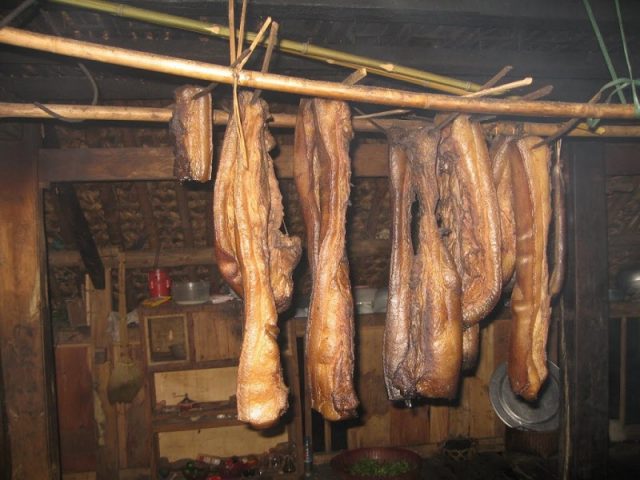
Before the advent of freezers and refrigerators, out of necessity man came up with natural ways of preserving fast perishing foodstuffs particularly meat. His ways were free of toxic chemicals or strong additives that could have harm life. From the resources around him, he was smart enough to learn that fire, wood and the variety of products within his reach could be at the center of increasing the shelf life of his meat.
The traditional method of meat preservation still exist today but in context limited to specific communities in Kenya like the Maasai. Among the main reasons for preserving food traditionally were to prevent wastage, discourage growth of bacteria that could be harmful to human life, and a source of food security in times of hunger strikes.
Below are the most practiced traditional ways of food preservation back in the days when technology was miles away.
1.Smoking
Beef and fish were among the common meat products preserved by smoking. When the meat was presented to a household it was chopped into small pieces and cleaned to remove any dirt. It was then sprinkled with salt and mixed with water and left to settle for a while, before being put on top of a fire, often from burning wood to absorb smoke. In some instances, the pieces of meat were neatly hooked on metallic bars above the fireplace, where they were directly exposed to the smoke.
Smoke from the burning woods killed microbes, as the meat dried out reducing the moist area for bacteria to grow while chemicals found in the smoke including formaldehyde and alcohols acted as preservatives. It also flavored the meat.
2. Drying
Meat was soaked in brine for a day or two. The strips of meat were then directly placed onto racks or a clean surface carefully arranged to leave enough space between the strips for airflow, then sun-dried for several days after covering the meat to keep flies off.
It was also be dried over fire, but this option required much more attention to prevent the meat from being charred. This option dehydrated the meat. High temperatures form the sun and fire destroyed the thriving environment for bacteria that could cause food poisoning if the meat was left unattended under room temperature.
3. Salting/Curing
It was one of the easy and convenient methods of preserving raw meat or fish which was cleaned and sprinkled with salt (dry salting) or dipped in brine. Salt enhanced the flavor of meat by suppressing undesirable or unpalatable savors while extending the shelf life by reducing microbial growth because in meat.
Salt inhibited the growth of microorganisms by drawing water out of microbial cells through osmosis due to the high concentration of salt outside the cell. The cells then lost water until they reached a state where the microbes could not grow or survive any longer. Once the meat was soaked in the brine, it was left to drip off and after drying the meat storage was done.
4. Fermentation
It involved a series of microbial ecosystems that combined bacteria, yeasts. This method dated back to thousands of years when it was quickly discovered that shelf-stable meat products could be produced by adding salt to it and subsequently dried or fermented.
To ensure a safe ferment in a piece of meat or fish, the growth of bad bacteria and pathogens was restricted. Thus was achieved through increasing the acidity by lowering the PH of the fermenting meat to a level that was extremely inhospitable to spoilage, bad bacteria, and pathogenic organisms. The fermenting meat was then fed with lactobacilli bacteria though some form of sugar in brines or rubs which cured the meat and also added flavors.
5. Roasting
Unlike the other methods of preserving meat traditionally which focused on giving the meat a long shelf life, roasting incorporated adding flavor to the meat. Roasting was an economical way to cook large joints of meat, as it was a very easy way to cook a meal for a large number of people and was suitable for any of the better quality, naturally tender cuts of meat.
On an open fire, meat stretched over burning coal and given plenty of time to heat up and cook. The bed of coal had to be thick with no rising flames. To allow the meat to cook enough, it was subsequently turned and all its parts exposed to heat so it could cook equally. Until the outcome was a browned and crispy piece of meat, the process kept on.
